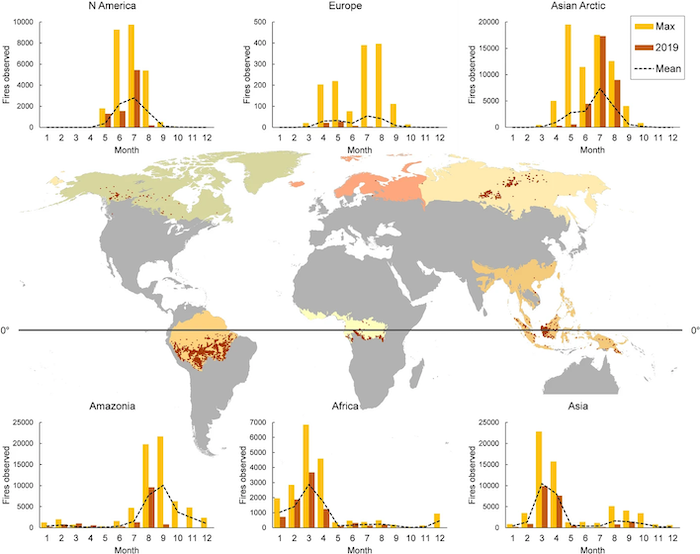
ENGSTRÖM, KEELLINGS – Wildfires in the Arctic and tropical biomes: what is the relative role of climate?
Johanna Engström, Peyman Abbaszadeh, David Keellings, Proloy Deb, & Hamid Moradkhani
Article first published online: 4 Jul 2022
DOI: https://doi.org/10.1007/s11069-022-05452-2
ABSTRACT: This study seeks to use machine learning to investigate the role of meteorological and climate variables on wildfire occurrence in the Arctic and the global tropical forests biomes. Using monthly fire counts observed by the MODIS satellites in combination with temperature and precipitation data, indices of large-scale atmospheric and oceanic anomalies (teleconnections), and global temperature anomalies (GT), a combined wavelet-machine learning approach is developed to identify drivers of variability in global wildfire counts on a monthly scale. Precipitation and temperature are found to be the most important predictors of wildfire count in all regions. In addition, the Atlantic Multidecadal Oscillation and GT are identified as the two major drivers of wildfire occurrence. Results indicate that the record-breaking 2019 wildfires in the Asian Arctic can be attributed to unusually warm and dry weather, while the recent increase in wildfires in Amazonia rather can be attributed to regional human activities.
Read the full publication at Natural Hazards.